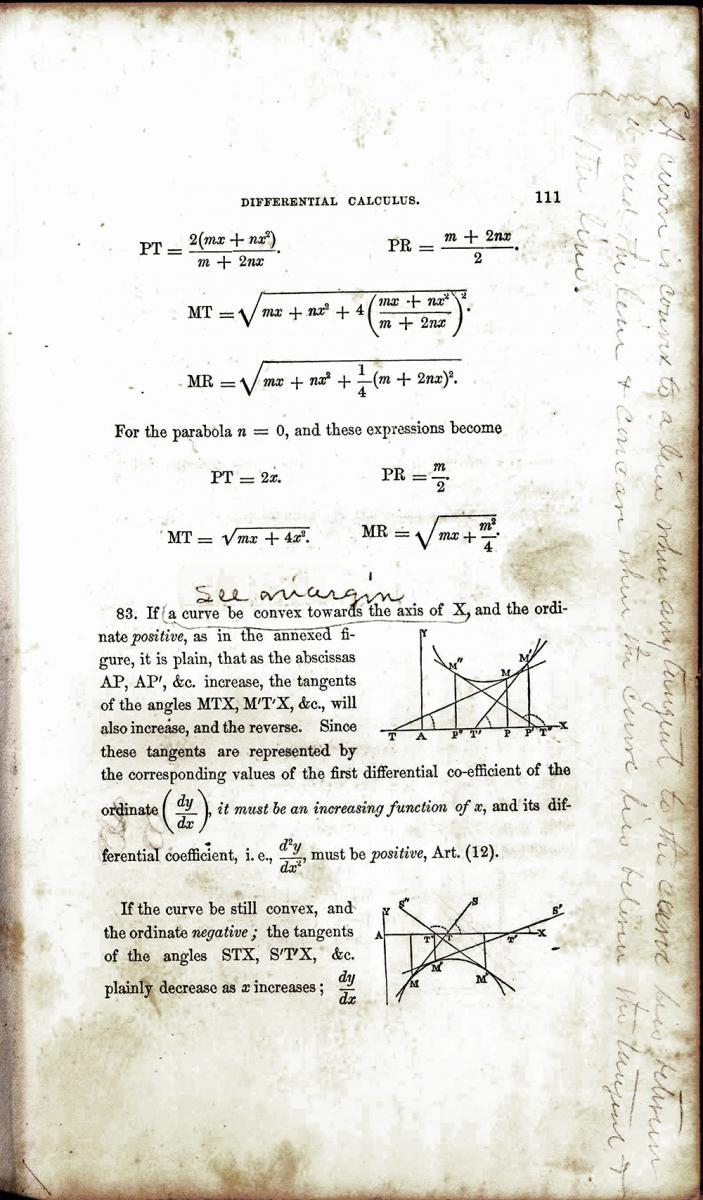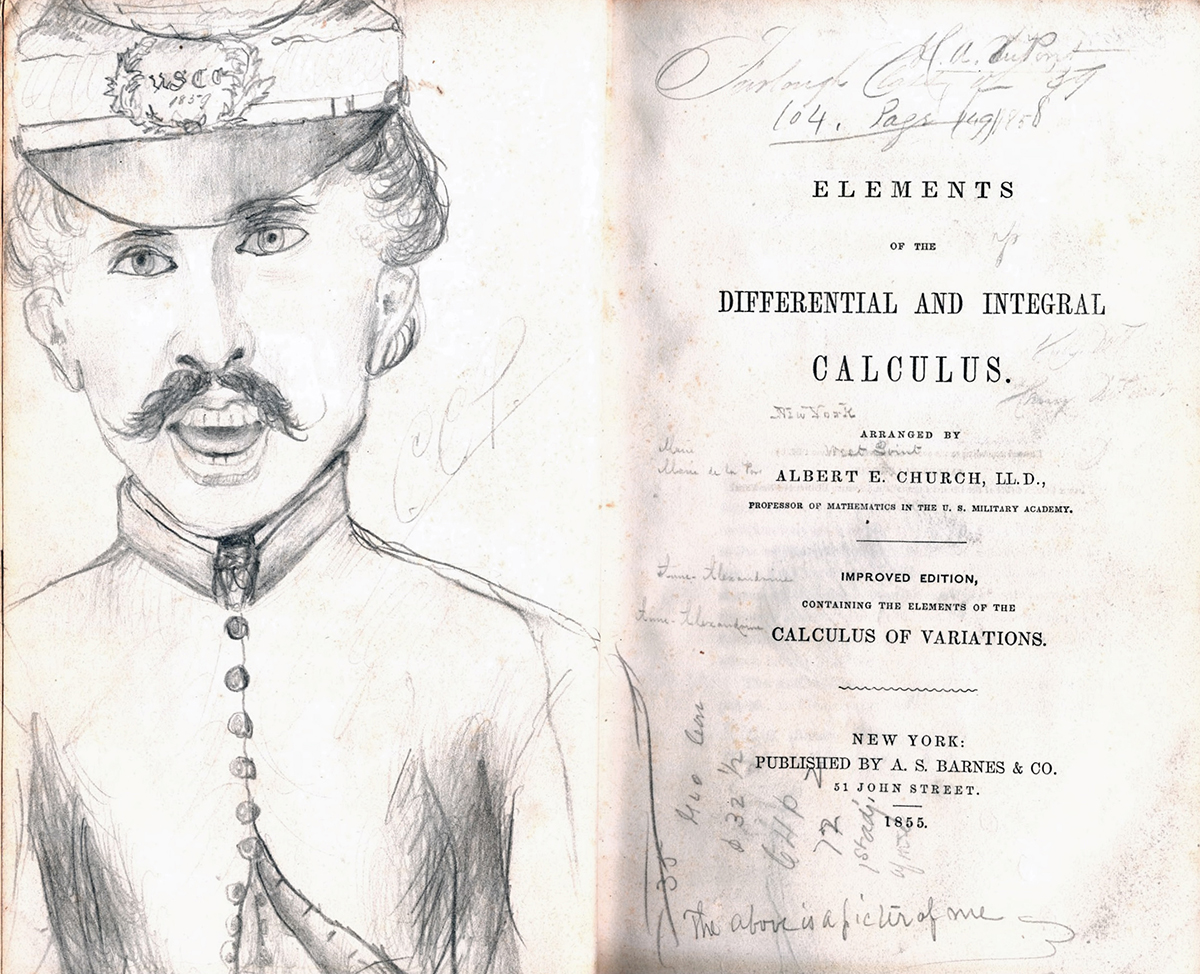
Recently a young man approached our Reference Desk in search of a book on differential calculus, which prompted me to examine our holdings on this rather atypical topic at Hagley. I recalled having handled within our special collections one or two such texts. Published during the mid-nineteenth century, they impressed me with their extensive marginal notes rendered in the hand of Henry Algernon du Pont. He was then a student at West Point who graduated first in the Class of 1861, served with distinction during the Civil War, and later became a U.S. Senator from Delaware.
It is my pleasure again to retrieve one of the volumes, Elements of the Differential and Integral Calculus, and share some of the markings it presents as graphic evidence of previous ownership.
In this day and age, the textbook trade offers consumers a mind-boggling range of course work options. When the Freshman in my family peruses her reading list, she evaluates the merits of renting titles against purchasing them, hard copy as opposed to electronic files, new versus used.
Meanwhile, I contemplate the experience of reading, studying, and assimilating material through the various media available today, and I wonder: what remains when the semester ends? The writer Mark O’Connell has observed that some “readers feel that they aren’t really giving a book their full attention unless they’re hovering over it with a pencil, poised to underline or annotate at the slightest provocation.” Perhaps this old-school sentiment motivated the young H.A. du Pont to jot in the middle of page 111, “See margin,” then expound at the right, as illustrated in Figure 1.
On the other hand, a different impulse altogether seems to spark the drawings that adorn nearly fourteen other pages in the book. Most notable is a self-portrait that faces the title page (Figure 2). Could this be “a more noble and outdated form of boredom-relief, that,” according to Vi Hart, “is doodling?” If you’ve never watched the viral video she posted in August 2012, following this link will introduce you to her passionate approach to connecting dots, literally and figuratively.

Doodling is widely recognized as an aid to concentration and memory. To connect with Elements of the Differential and Integral Calculus or other items of this genre at Hagley, we invite you to browse our catalog for “Marginalia (Provenance)” or “Markings (Provenance),” and draw your own conclusions!
Figure 1: Notes in the previous owner’s hand: “See margin … A curve is convex to a line where any tangent to the curve lies between it and the line & concave where the curve lies between the tangent and the line.”
Figure 2: In the hand of H.A. du Pont: “The above is a picture of me.”
Resources
O’Connell, Mark. 2012. “The Marginal Obsession with Marginalia.” The New Yorker (January 26, 2012). Accessed August 15, 2016. http://www.newyorker.com/books/page-turner/the-marginal-obsession-with-marginalia.
Hart, Vi. “Doodling in Math Class : Connecting Dots.” YouTube video, 7:46. August 21, 2012. //www.youtube.com/watch?v=v-pyuaThp-c.
Alice Hanes is the Technical Services Librarian at the Hagley Museum and Library.
